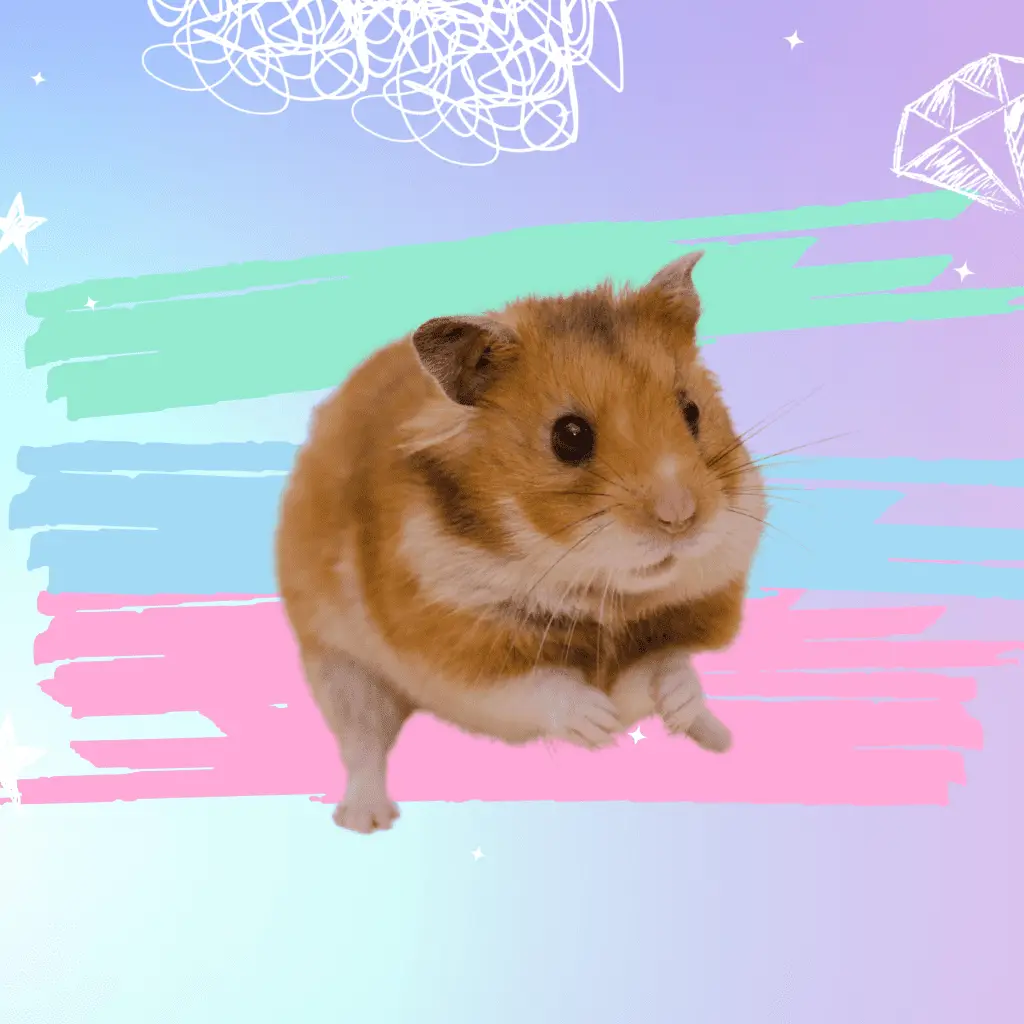Here is The comprehensive hamster care guide. Give your new pet hamster the love and care they deserve.
Hamsters are a very popular first pet.
Whilst they may well be the perfect pet, it is important to do your research before you find yourself wandering down the pet aisle and making a spontaneous purchase.
There is a lot to consider from cost, their nocturnal natures, their diet, how to handle them, who will clean their cage, and how you can create a natural environment for them to thrive in.
Choosing your hamster
There are 24 different types of hamsters and for more information on different types, you can check out this article here, however most commonly those kept as pets are:
Dwarf hamsters
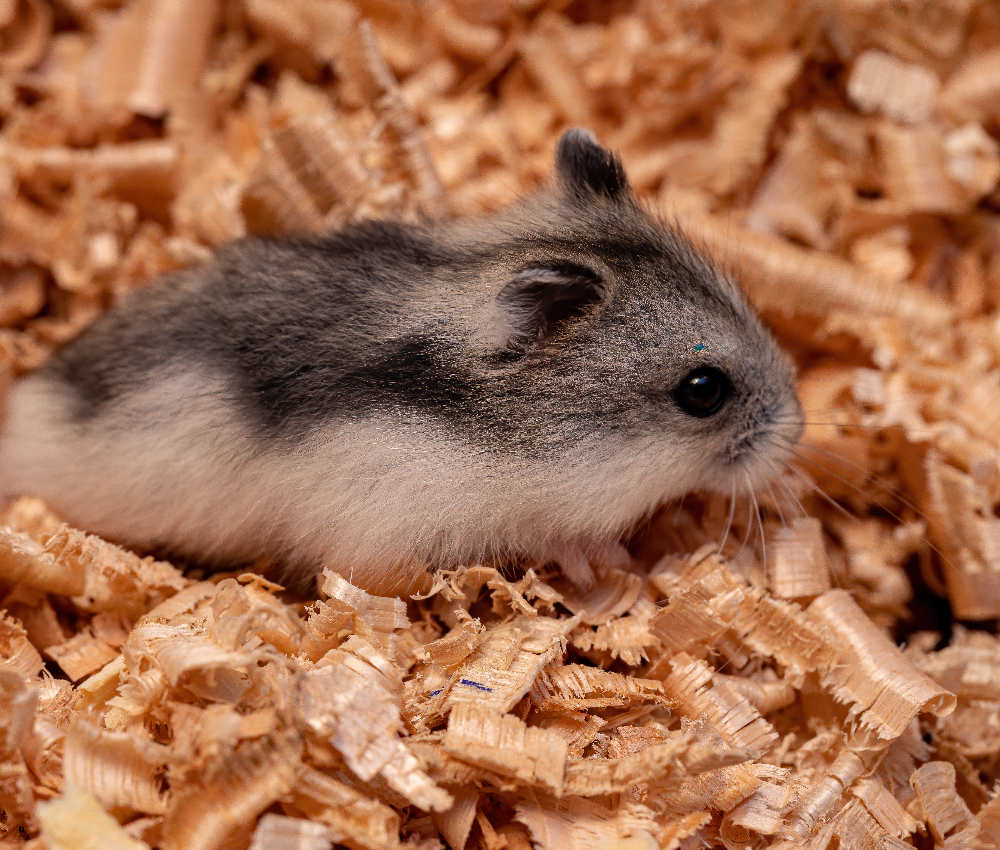
There are three common dwarf hamsters, the Russian dwarf hamster, the Roborovski hamster, and Campbell’s dwarf hamster.
These hamsters are 2 and 4 inches, live up to 3 years, are very quick, and can be prone to nipping.
They are content being left alone rather than handled and can live with other same-sex hamsters provided they have been together from a younger age.
Syrian hamsters (AKA the Golden hamster)
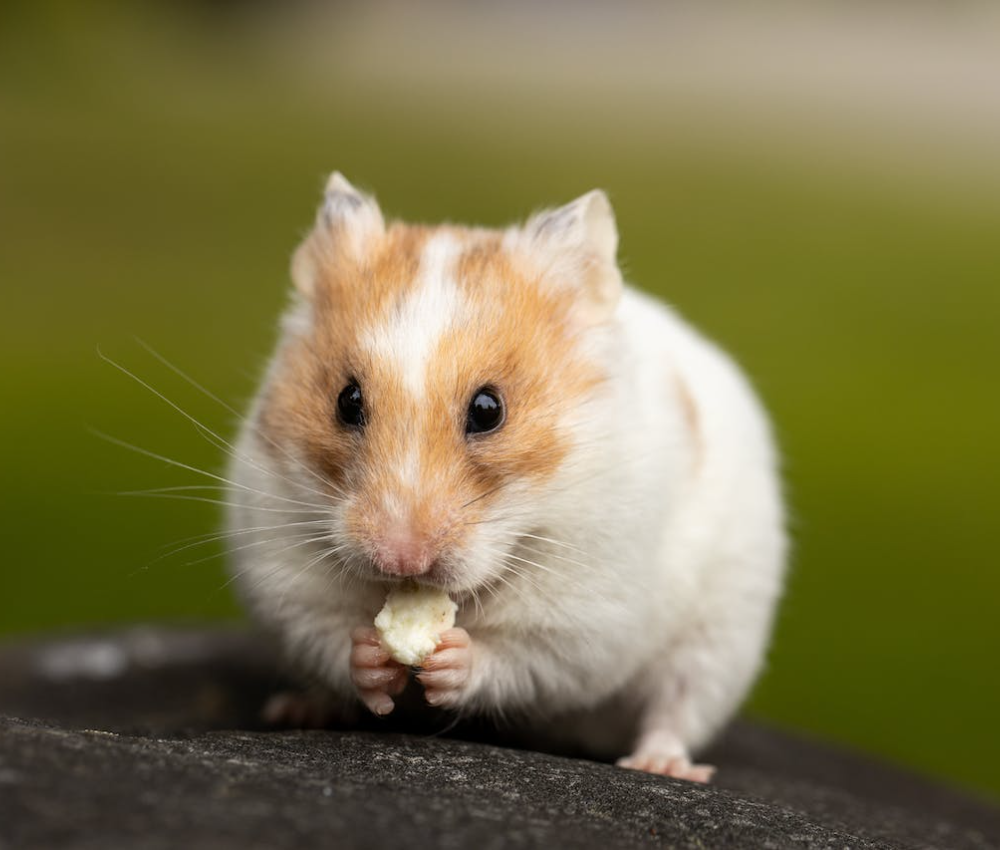
This is the most common domestic pet hamster and is about 5-9 inches in size and lives between 2 and 4 years.
These hamsters vary in colour and fur length and are happier being handled than their counterparts but after 8 weeks, they can’t live with any other hamsters.
They will fight to the death so don’t assume they are lonely, they are content on their own provided they have the right environment and other enrichment.
You should buy your hamster from a breeder as hamsters bought from pet shops tend to have more health problems.
Cost
Whilst a hamster costs between £15 and £30, this is misleading as a guide to the actual longer-term cost of owning this little critter.
They are not cheap pets when you consider the other items (listed below) and their health care over their life span of 2-4 years.
You will need to budget approximately £150 before venturing into owning this small animal if you want to make sure they are happy, healthy, and content.
Vet bills typically start at £50 a visit so ensure you are also able to cover ongoing veterinary costs should your new furry friend need any care.
Hamster cage/enclosure
Set up your hamster’s new home before you collect them so that you minimise the time your new pet spends in their temporary accommodation.
The transferral process to their new home is very stressful for a hamster so the sooner they arrive in their forever home, the better.
Things to consider when setting up a hamster home:
Location
Hamsters hate loud noises and find them very stressful so ensure that they are located in a quiet space, not too cold and not in direct sunlight.
Remember they can not choose to leave of their own fruition so it needs to be just right for them and the ideal temperature is between 18-21 degrees.
Hamsters are naturally nocturnal animals which means they wake up during the night and sleep during the day. It may be wise not to keep them in your bedroom or they may keep you awake too.
Size
Let’s talk size!
Just because your hamster is small does not mean they can live in a small cage.
The recommended size for their enclosure is 40 inches by 20 inches (which is 800 square meters of floor space).
Type
Getting a glass aquarium or a bin cage would be better than buying a wire cage.
You could buy a large plastic storage box, cut a hole in the lid, and attach wire mesh using cable ties if you wanted to build your own for a reasonable price.
Make sure it is escape proof as hamster’s are the Houdini’s of the pet world.
Bedding and nesting materials
One of the reasons the above enclosures are recommended over wire cages is because hamsters love to burrow and cages don’t allow you to pile up the bedding.
If you are able to provide 10 inches of bedding then you will have one happy little hamster.
They can dig, hide, tunnel, store food, and even sleep in their self-made burrows.
It is important the hamsters burrows hold their structure. You don’t want it to cave in on them. Their nesting area needs nice soft materials for them to settle down in so use any of the following:
-
-
paper-based bedding
-
-
-
Aspen
-
-
-
Spruce
-
-
-
Hemp
-
-
-
Soft hay
-
-
-
Tissue
-
-
-
Birch
-
-
-
Cheap, thin toilet paper (make sure this is not thick or scented)
-
The following are not suitable bedding or nesting materials:
-
-
Sawdust, wood shavings, cedar or pine shavings can irritate your hamster’s respiratory system
-
-
-
Fluffy bedding like cotton wool can get wrapped around your hamster’s little legs or be ingested
-
-
-
Scented bedding as the scent irritates your hamster’s airways
-
-
-
Shredded newspaper as the ink can be toxic to your new furry friend
-
Hamster wheels
Did you know that hamsters are high energy creatures and in the wild they can run up to 5 miles every night?
An exercise wheel is essential for your hamster’s home and the right size wheel is equally as important.
As a guide, dwarf hamsters need a minimum wheel size of 10 inches and Syrian hamsters need a minimum size of 12 inches.
You may be wondering whether to get a hamster ball to help your hamster get their steps in. The RSPCA do not recommend these.
Hamsters have poor eyesight and they rely on their sense of touch and smell to find their way around their environment. Being stuck inside a plastic ball cuts off their ability to use these senses.
Whilst in a hamster ball they have no control over accessing food, their water bottle, their shelter or to be able to use the facilities.
They could get their legs trapped in the little holes and they will find bumping into the skirting boards and other objects stressful.
Hideout
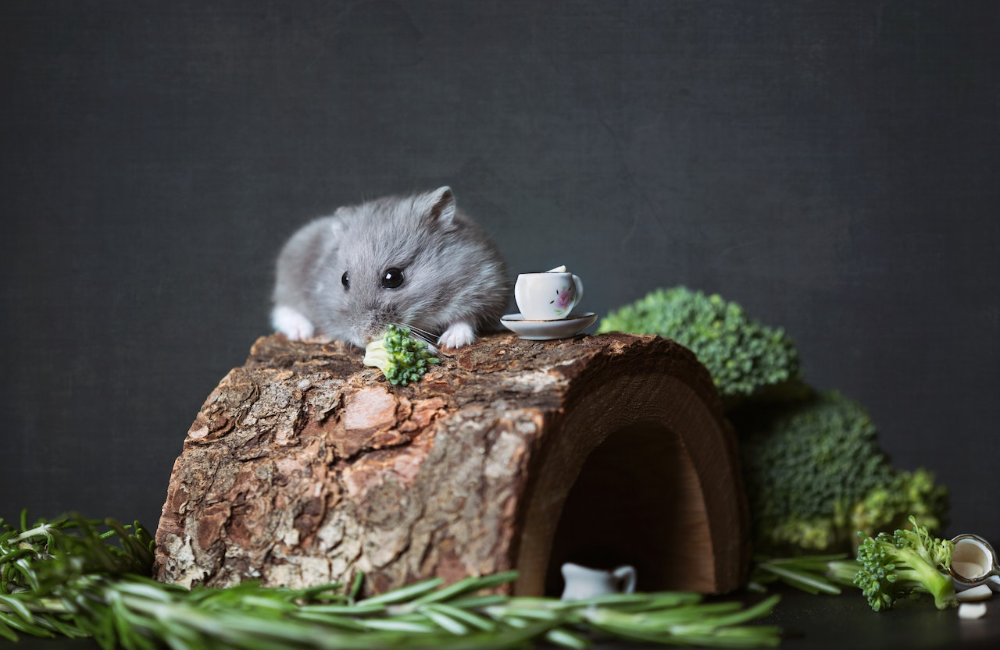
Hamsters are prey in the wild so they have a strong instinct to hide away!
You should provide them with hideouts with multiple chambers. You can make these yourself out of cardboard boxes (dust off your Blue Peter badge) or you could even buy unused candle wax melt holders to do the same job.
Enrichment
Keeping your furry friend’s brain stimulated is super important.
If you were in a cage all day and night you would be very bored without something to explore or something to do (It would also be super weird that you were in a cage).
Keep your hamster occupied by providing plenty of tubes, branches, tunnels, cork logs, grapevine wood, and bamboo.
They have a natural instinct to climb on and through things.
Digging boxes
Hamsters are stimulated by touch so if you are going to be the parent of a spoilt hamster then you could provide various materials for your hamster to dig in and explore:
-
-
Coconut fibre
-
-
-
Bark
-
-
-
Cork granules
-
-
-
Beech chips
-
-
-
Aspen shavings
-
These are not always suitable for being in the main enclosure unless as a digging box. They will collapse when your hamster burrows in.
Keep them relatively shallow and purely for providing different textures and stimulation to keep your hamster happy.
Gnawing objects
Your hamster home should house plenty of gnawing objects to keep your hamster’s teeth healthy.
You can use cardboard tubes, coconut shells, hay cubes, unbleached loofahs, pumice stones, and seagrass.
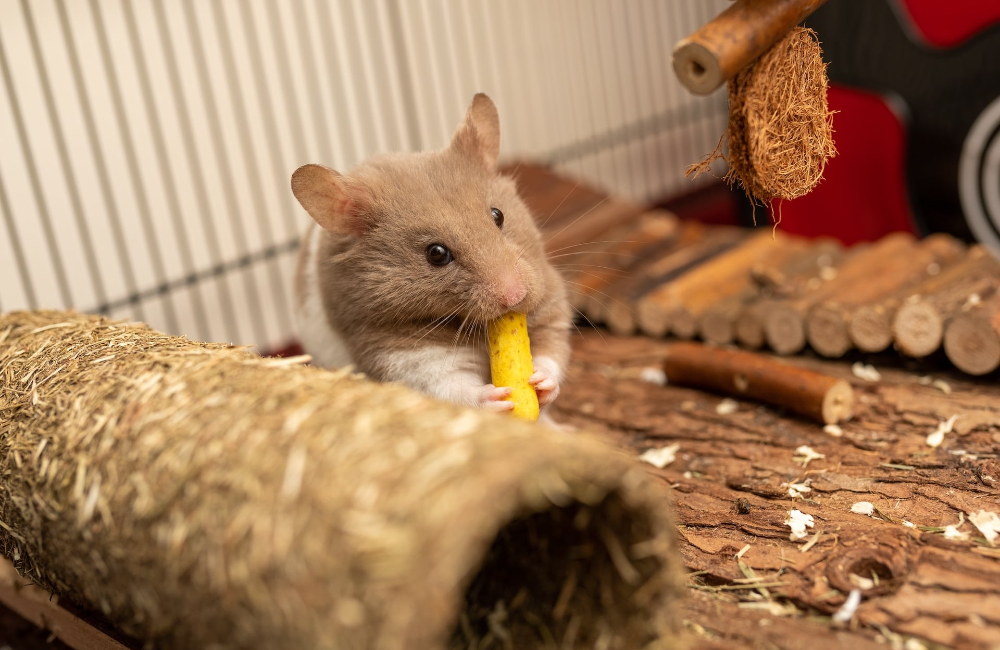
It is better to avoid mineral, salt or edible chews.
Hygiene and cleaning
Hamsters are very clean animals.
They clean themselves, their poop doesn’t smell and they only pee in a corner. It is important for your hamster’s health to keep their environment clean.
Cleaning the cage
Hamsters have strong scent glands and they leave their scent along with their poop to mark their territory.
When you are cleaning their cage it is very upsetting for them if you remove all of their bedding and nesting materials and replace them with new ones.
Instead, spot-clean their cage by removing poop, taking out uneaten food and scooping out the soiled bedding with the urine daily.
Every 14 days remove half of their bedding and nesting materials and replace them with some clean ones. This ensures they always have familiar smells around them and makes for a happier more settled hamster.
It is also important to keep the layout of the cage the same. Hamsters are creatures of routine and habit, they like to know where things are to help them orientate themselves.
Sand bath
It is critically important that you never wash your hamster with water.
This could send them into shock and is not good for their furry coat.
Instead, allow them to have a little sand bath. To do this you will need to purchase 100% sand which has no additives or dyes such as Exo-Terra desert reptile sand. Make sure the sand you buy is safe for your pet.
Once you have this, tip it into a box and when your hamster is strolling around in it, gently place some sand on top of their fur. This will help clean the oil and any smells off their coat.
Food and water
Water
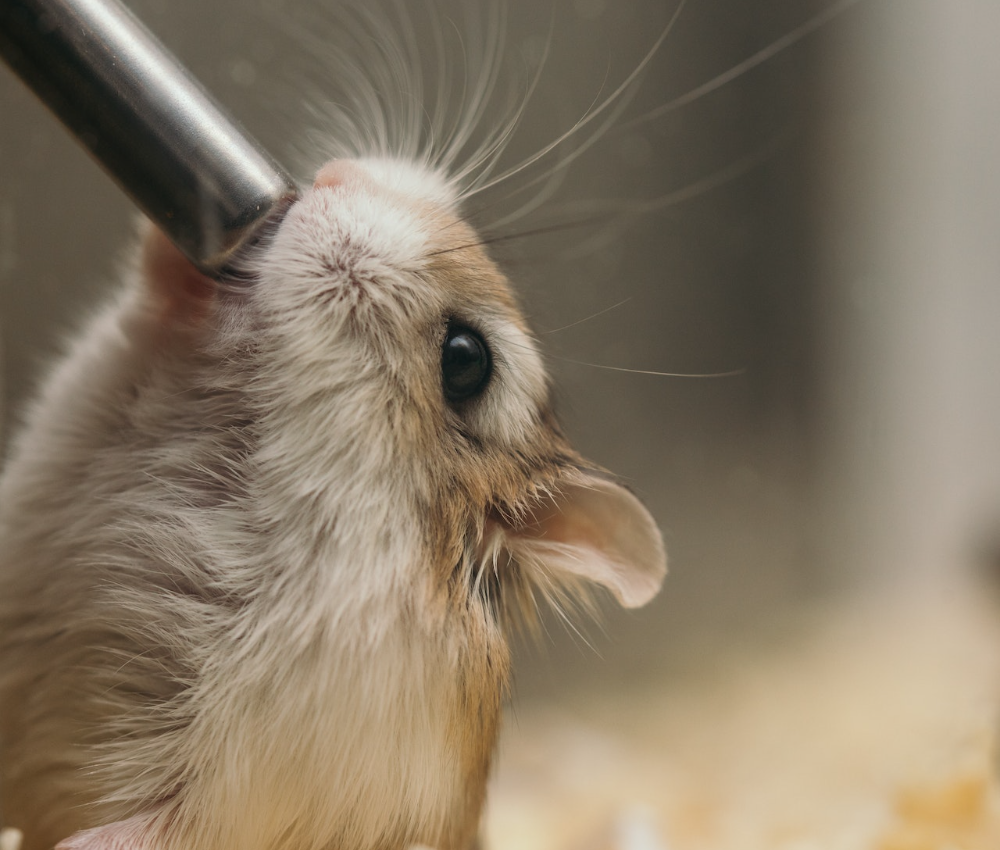
You can purchase a water bottle that attaches to the cage or a ceramic dish as a means to provide daily fresh water for your hamster.
Food
A plastic food bowl will likely end up being chewed so you would be better to buy a ceramic bowl for your hamster’s food. It should always be two thirds full, hamster’s don’t like eating the left overs.
Your hamster’s diet should include high protein and fibre but should also be low in fat; maintaining their weight is essential to a hamster’s health.
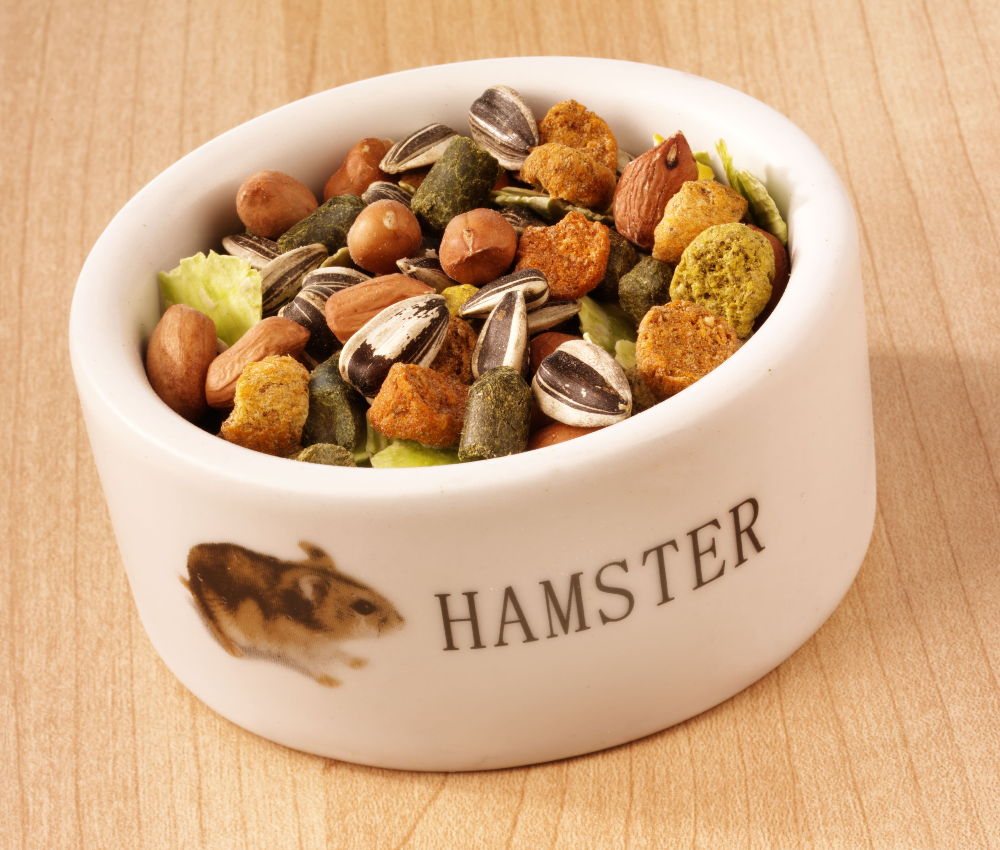
A lot of common hamster food mixes have a higher proportion of sunflower seeds and corn. This is not going to provide an enriching diet for your new friend.
Hamsters need a varied diet which includes grains, seeds, nuts, animal proteins, fruits, and vegetables.
Etsy is a great place to find homemade hamster mixes along with dried herbs and flowers which can be sprinkled in the hamster’s cage to provide them with new textures and scents.
Here is a list of possible foods you can feed your hamster (but all in moderation):
-
-
Mealworms
-
-
-
Apples (but not the seeds)
-
-
-
Other fruits – Bananas, pears, melon and peach
-
-
-
Washed vegetables – Broccoli, carrots, cabbage and sweet peppers
-
-
-
Cucumber
-
-
-
Dandelion leaves
-
-
-
Boiled egg
-
-
-
Sunflower seeds
-
-
-
Nuts (but not almonds)
-
-
-
Cooked chicken
-
-
-
Cress
-
-
-
Spinach
-
-
-
Herbs – basil, sage, parsley and coriander
-
There are some foods that you should not give your hamster:
-
-
Apple seeds
-
-
-
Almonds
-
-
-
Unwashed vegetables
-
-
-
Raw rhubarb
-
-
-
Raw beans
-
-
-
Raw potatoes
-
-
-
Garlic
-
-
-
Tomatoes
-
-
-
Onions
-
-
-
Fatty meats
-
-
-
Chocolate
-
-
-
Anything with sugar, salt or excess additives
-
When you have a new pet hamster it is important not to make big changes to their diet straight away. Introduce new foods slowly so they don’t have an upset stomach.
Bonding
When you first return home with your hamster you need to allow them about a week to settle in and get used to their new home.
Spend time next to their enclosure reading so your hamster gets used to your voice and the way you move.
Wipe a tissue on your hands and leave this in your hamster’s home so they get used to your scent.
It will help to have a routine when it comes to feeding and cleaning, hamsters learn this schedule and they may even start to come out to you when it is time to eat.
Treats can be used in moderation but especially in the first few days and weeks to create a positive association between you both.
Hamsters have unique personalities and characteristics and you need to take your time getting to know each other.
Handling
Hamsters are nocturnal (aka crepuscular) so don’t wake them in the middle of the day to play and expect them to be cheerful about it.
Wait for them to appear on their own schedule and wait at least a week before handling them for the first time so they have settled into their new environment.
When you are handling your new friend make sure that you have washed your hands with unscented soap so you don’t taste like a snack.
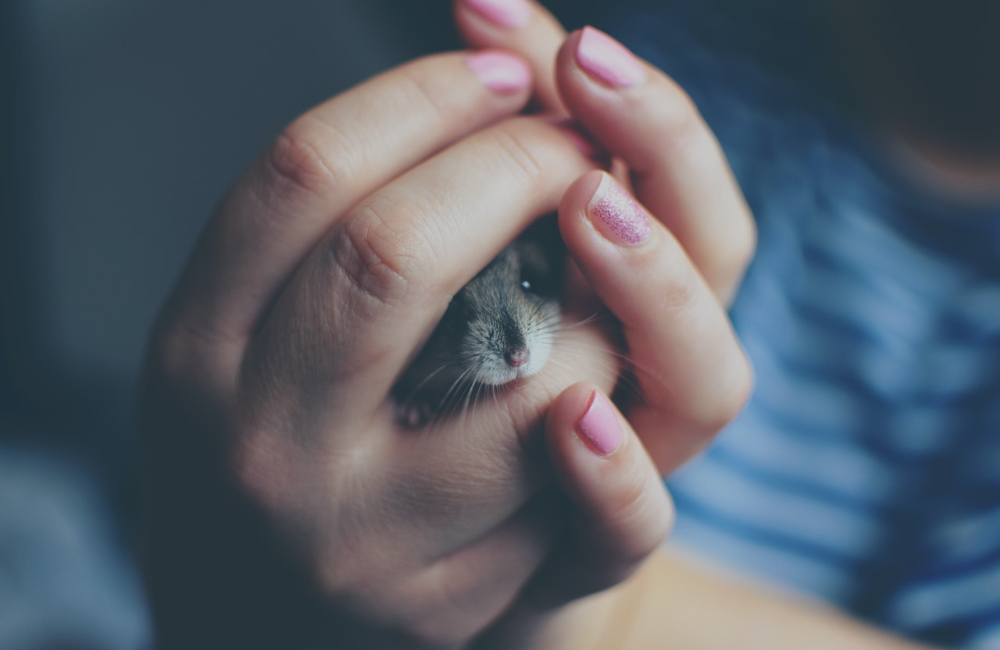
With small animals like a hamster, it is important to understand that they have no depth perception and very poor vision.
They are curious but definitely not as smart as cats and dogs so they will be unaware of the impending doom waiting for them if they jump off your hand from a great height.
Make sure you are low to the ground when you are interacting with your pet and if you need to transport them from the cage use a hamster taxi.
What’s a hamster taxi? I am so glad you asked.
It is a little jug or mug to safely transport them to the location where you are going to be spending time with them. You could use a small treat to get them used to jumping on board.
It is not natural for small animals to be lifted suddenly into the air and as you can imagine it would usually symbolise danger.
Once they have become comfortable with their hamster taxi start to encourage them to walk onto your hand in the cage. Put your hand palm down initially for them to get used to your scent. After a few minutes turn your hand over and see if your little friend will walk onto you.
Another idea is to sit in an empty bathtub with your hamster to allow them to safely get used to you; look out for signs of distress and make sure to return them to their cage if they are pacing around frantically or are being chaotic.
Most hamsters need time to get used to being handled so be patient because scared hamsters will bite; this is the only way they can communicate that they want you to stop what you are doing.
Playpen
There are a variety of playpens you can buy for your hamster and this is advised as hamsters are fast and easily lost during playtime.
This gives you a safe space to interact with your hamster where they will likely feel more relaxed.
You could place some of their bedding and some enrichment items from your hamster’s cage into the playpen so they have familiar scents that they recognise. This will help your pet to relax and enjoy their time with you.
Always keep your hamster inside the house. There are dangers outside of the home such as bugs, parasites, and other predatory animals.
Losing your hamster outdoors is tantamount to a death sentence for them and just isn’t worth the risk.
Health
Stay alert to any health issues your new hamster may be facing by regularly handling and observing them. If you notice anything unusual or any changes to their behaviour contact your local vets.
You should be looking out for any of the following:
-
-
Not eating (this may become obvious when you handle your hamster and he feels thinner)
-
-
-
Diarrhoea
-
-
-
Hair loss
-
-
-
Sneezing
-
-
-
Runny eyes
-
-
-
Overgrown teeth
-
-
-
Limping
-
-
-
Swellings
-
Check out the RSPA’s website for more information on healthy hamsters and more things to look out for.
Don’t forget that hamsters bought from pet stores tend to have more health problems so do try to buy yours from a reputable breeder.
Signs of emotional distress
Look out for the following behaviours because these are seen by hamsters who are bored, stressed or unhappy. This can be a stress response associated with a lack of stimulation or having a cage that is too small:
-
-
Gnawing bars
-
-
-
Monkey barring (climbing and hanging from the cage bars)
-
-
-
Cage pacing
-
-
-
Wall scaling
-
-
-
Lethargy
-
Do your research on how to recognise stress in a hamster and how to calm.
Your new pet only gets one little life so it is your responsibility to be as observant as possible in pursuit of giving them the best innings in their life with you.
Conclusion
You now have all the information you need to begin your journey into offering the best hamster care to a new furry friend!
Make sure their instinctive and natural needs are met and you will likely find you get a lot back from your hamster when they feel settled and secure in their new home.
If you have any tips to share with new hamster owner, please leave them in the comments.
